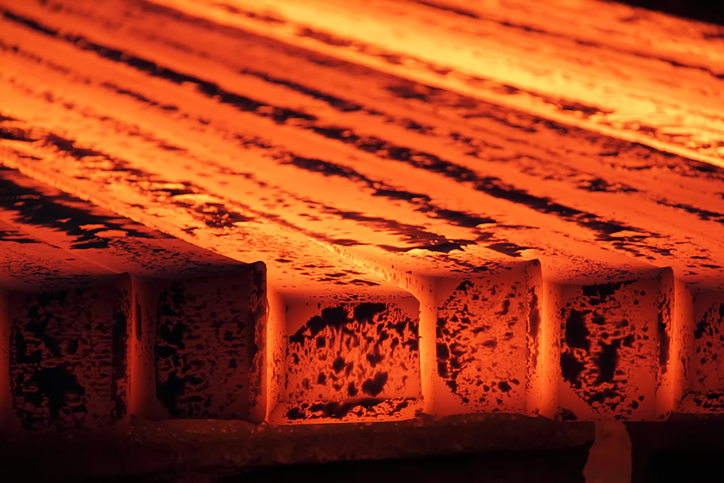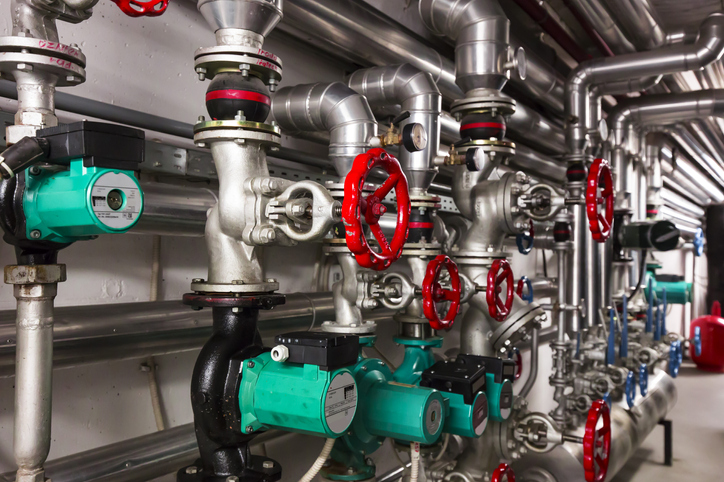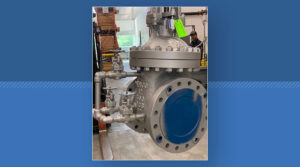A NACE Compliant Valve
In the world of industrial valves, selecting the right choice for your specific application is crucial to ensure optimum performance. One key factor in this decision-making process is the compliance with industry standards like NACE (National Association of Corrosion Engineers). This article reviews requirements for a NACE compliant valve, then summarizes some key elements of the MR0175 and MR0103.
What is a NACE Compliant Valve?
A NACE compliant valve is one with a design that meets requirements as per NACE MR0175/ISO 15156 and NACE MR0103/ISO 17945. Meeting these requirements makes them capable of withstanding corrosive environments, especially sour service. The term “sour service” refers to corrosive environments where there is exposure to a relatively high percentage of hydrogen sulfide (H2S). In such environments, hydrogen atoms can preferentially seep into hard materials like high-strength metals and heat affected zones (HAZs) that have not been stress-relieved. As hydrogen builds up in these materials, there is a corresponding pressure build up, resulting in cracks and eventual failure. This phenomena is referred to as hydrogen induced cracking (HIC), and in the presence of stress, the failure could be by sulfide stress cracking (SSC).
Using NACE compliant valves in such situations helps to extend equipment life, reduce maintenance costs, and enhance safety. This is particularly useful where valves are in hard-to-reach areas like offshore oil and gas facilities in which intervention activities come at a significant cost.
NACE MR0175
NACE MR0175 was initially released in 1975, covering requirements relating to materials for resistance to sulfide stress cracking. There have been several revisions over the years until its merger into ISO 15156 in 2003 along with significant restructuring. The restructuring includes coverage for chloride stress corrosion cracking, alongside new restrictions and requirements for using Corrosion Resistant Alloy (CRA). Since the 2003 document, the task of determining acceptability of a material was split into two separate functions:
-
- Function 1: The manufacturer must ensure that the valve meets the metallurgical and manufacturing requirements so that it is permissible for sour service use.
-
- Function 2: The end-user must ensure valve is compatible on the basis of specific service environment parameters such as pH, chlorides, temperature, H2S partial pressure, etc.
The implication of this change is that a compliant material prior to the 2003 merger may no longer qualify as compliant. For example, using the 2002 edition, 316 SS can serve in sour service as long as it is annealed, free of cold work, and with hardness less than HRC 22. But from the 2003 edition, this material satisfies only Function 1. It requires further assessment on the basis of Function 2 and qualifies if the service has a chloride concentration below 50 mg/L. Also, the operating temperature should be less than 60 and the H2S partial pressure below 100 kPa. Thus, it is necessary to mention the revision of MR0175 referenced in any material certification.
Summary of MR0175 Requirements
The requirements in this standard cover a vast number of materials with details including:
-
- General principles for the selection of crack-resistant materials.
-
- Cracking resistant carbon and low-alloy steels, as well as the use of cast irons.
-
- Cracking resistant CRAs (corrosion-resistant alloys) and other alloys.
Requirements in this standard are robust, but the following sections review just a few.
Material Hardness Requirements
Steel with high levels of hardness are susceptible to HIC because of their microstructure. So, the NACE MR0175 limits the allowable hardness for each type of steel as the table below shows.
| Type of Steel | Grades | Permissible Hardness (HRC) |
| Ferritic | 405,430, 409, 434, 436, 442, 444, 445, 446, 447, 448 | ≤ 22 |
| Martensitic | F6NM | ≤ 23 |
| Austenitic | S20910 | ≤ 35 |
| Precipitation Hardening | S66286 | ≤ 35 |
Material Chemical Properties
The chemical properties of a material influences its ability to operate in sour service. For example, steel with higher carbon content results in increase in hardness and susceptibility to failure in sour service. So, the MR0175 limits certain chemical elements for a material to be certified.
| Chemicals | Content |
| Carbon | C ≤ 0.10% |
| Sulfur | S ≤ 0.002% |
| Phosphorus | P ≤ 0.020% |
Heat Treatment
The heat treatment condition of a material influences its performance as it relieves stress and minimizes susceptibility to SSC. However, only certain heat treating processes are recommended for each material group. For example, allowable heat treatment conditions for carbon steels include:
-
- Hot-rolling.
-
- Annealing.
-
- Normalizing.
-
- Normalizing and tempering.
-
- Normalizing, austenitizing, quenching, and tempering.
-
- Austenitizing, quenching, and tempering.
In addition, cold-worked carbon steel materials that produce outer fiber deformation greater than 5% must undergo stress relief to attain hardness below 22 HRC.

NACE MR0103
The principal reason for the NACE MR0103 is the difference between the upstream (oil and gas production) and downstream (refining and gas processing) environments. While MR0175 addresses most issues upstream, the MR0103 focuses on a broader range of sour conditions in downstream processing units. According to this standard, a material requires qualification for sour service if any of the following conditions are present in the downstream units.
-
- Free water with dissolved H2S > 50 ppmw. This is because significant levels of dissolved H2S can result in SSC even if pressure is low.
-
- A free water pH < 4 and some dissolved H2S present. This recognizes that in low-pH environments, significant charging of materials with atomic hydrogen can take place despite the H2S level.
-
- A free water pH > 7.6 and > 20 ppmw hydrogen cyanide ion (HCN) and some H2S dissolved in the free water. When pH is high, the HCN ion is stable and results in significant charging of ferritic materials, thus poisoning the formation of a protective iron sulfide scale.
-
- > 0.0003 MPa abs (0.05 psia) partial pressure H2S in a process with a gas phase.
Summary of NACE MR0103 Requirements
Due to peculiarities of sour environments in downstream facilities, requirements of the MR0103 differ slightly as the following sections highlight.
Carbon Steels
MR0103 shares the same requirements as MR0175 for the heat treatment conditions of carbon steels. But it has additional requirements when it comes to welding of this material due to increase in hardness at HAZs. This standard requires that weld deposits meet a hardness limit of 200 HBW maximum. Also, it allows control of the HAZ hardness using the following methods:
-
- Post-weld heat treatment (PWHT).
-
- Base metal chemistry controls.
-
- HAZ hardness testing during welding procedure qualification.
These welding requirements are on the basis of methods as per NACE RP0472.

Alloy Steels
The MR0103 defines alloy steels as those with a chromium content that is less than 10%, but the total alloying element content can exceed 10%. MR0175 restricts the nickel content in these steels to 1%, however, this restriction does not exist in the MR0103. This standard restricts alloy steels in P-Number assignments to maximum hardness ranging between 225 and 248 HBW as the following table highlights.
| P-Number | Maximum Hardness (HBW) |
| 3, 4, 10A, 10B, 10C, 10F, and 11 | 225 |
| 5A, 5B (except 9Cr-1Mo-V grades), 5C, 6, and 7 | 235 |
| 5B 9Cr-1Mo-V grades (F91, P91, T91, WP91, Grade 91, and C12A) | 248 |
Whereas alloy steels without P-Number assignment must meet a 22 HRC maximum hardness requirement, which coincides with MR0175.
Welding alloy steels requires PWHT at 1150℉ minimum to produce a maximum hardness of 22 HRC like in MR0175. But it also allows welding without PWHT for P-Number 3 and 4 materials in cases where ANSI/NB-23 permits it.
Martensitic Stainless Steels
The requirements for martensitic steels are similar in both MR0175 and MR0103, with the common grades being S41000, CA15, and CA6NM. However, the MR0103 requires weldments in S41000 or CA15 to undergo PWHT at 1150°F minimum to produce a maximum weldment hardness of 22 HRC. While weldments in CA6NM must be double-tempered as the base metal to produce a maximum weldment hardness of 23 HRC.
Austenitic Stainless Steels
The MR0103 defines acceptable alloys by a general composition requirement as the following table shows.
| Element | Weight Percent |
| C | 0.1 maximum |
| Cr | 16.0 minimum |
| Ni | 8.0 minimum |
| Mn | 2.0 maximum |
| Si | 2.0 maximum |
| P | 0.045 maximum |
| S | 0.04 maximum |
Selecting a NACE Compliant Valve
Note that the previous sections provide a brief insight into the NACE MR0175, as well as the NACE MR0103. To properly select a NACE compliant valve demands a rigorous process and includes a combination of standards and operating conditions. At QRC, our team can provide you with expert guidance in designing and acquiring the right valves for your project.


